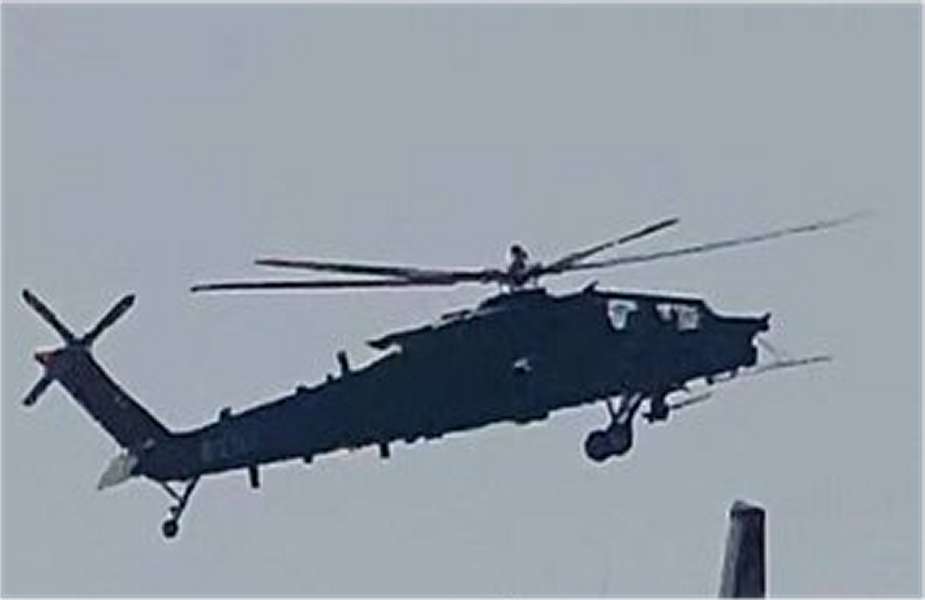A new attack helicopter, designated as the Z-21, was spotted during its flight tests this week in China, according to images shared on Chinese social media on March 24, 2024. The Z-21, apparently developed from the Z-20 model, represents the latest advancement of the People's Liberation Army (PLA) in enhancing its aerial capabilities. The design of the new Z-21 appears to be very similar to that of the American-made AH-64 Apache attack helicopter.

China Z-21 attack helicopter (Picture source: China social media)
The Z-21 shares design elements with the Z-20, which itself is inspired by the American Black Hawk. However, the Z-21 distinguishes itself with an attack-optimized configuration, adopting a slimmer silhouette and equipped for combat, although specific details remain to be confirmed as testing progresses.
Notable features of the Z-21 include improvements in terms of self-defense systems and a design that reduces its infrared signature. These features aim to enhance its battlefield survivability. Although a chin gun has not been observed in the current images, it is anticipated as a standard future addition for this type of attack helicopter.
The Z-21 exhibits several notable similarities with the American UH-64, reflecting a convergence in the design concepts of attack and utility helicopters. Both helicopters share features such as robust and efficient powerplants, though the Z-21 is distinguished by the upward orientation of its engine exhausts, aimed at reducing its infrared signature against heat-seeking missiles. The cockpit of the Z-21, with its combat-optimized configuration, echoes the advanced pilot station of the UH-64, designed to maximize pilot visibility and operational efficiency. Both aircraft are equipped with similar protruding fairings, though those on the Z-21 may be less pronounced, and strategically placed chain guns to provide considerable firepower. The stub wings under the engine inlets, designed to carry various armaments, are another shared characteristic, underscoring the versatility and enhanced combat capability of these helicopters. These similarities demonstrate ongoing adaptation and innovation in military helicopter development while retaining proven elements that strengthen mission capabilities.
Military experts view the Z-21 as a key player in potential conflicts involving Taiwan or India, highlighting its ability to operate at high altitudes. This factor is crucial for operations in mountainous terrains and could enhance China's offensive capabilities in these regions.
The development of the Z-21 is the result of a collaboration between several entities in the Chinese defense industry, including Harbin and Changhe, as well as the 602nd Research Institute. These collaborations indicate China's integrated approach to developing its military capabilities.
The Z-21 is seen as a complement and potentially a replacement for existing attack helicopter models in the Chinese arsenal, such as the Z-10, with an expected service entry within the next two to three years. Its introduction underscores China's ongoing efforts to modernize and expand its armed forces, particularly in the context of increasing regional tensions.















